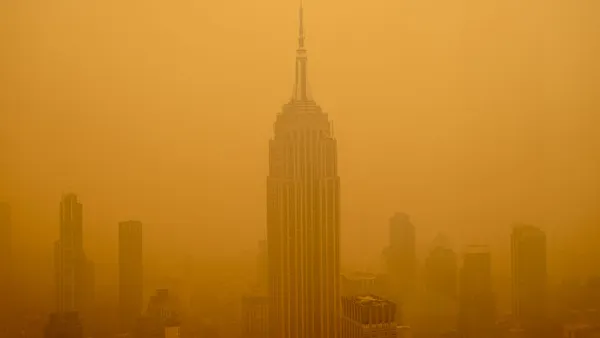Dive Brief:
- Miami-Dade County this week released its first extreme heat action plan. Mayor Daniella Levine Cava said the plan is “a roadmap for protecting our residents, visitors, and economy.”
- The plan’s strategies cover three main goals: to inform, prepare and protect people; to cool homes and emergency facilities; and to cool neighborhoods. Ideas range from creating a network of resilience hubs to increasing shade at bus stops.
- “While Miami-Dade County is known internationally for its vulnerability to hurricanes and flooding, extreme heat causes more death and has a greater annual economic impact than any other climate or weather-related disaster,” the announcement stated. Extreme heat, described as a “silent killer,” leads to approximately 34 deaths and an estimated $10 billion in economic loss from lost worker productivity across the county every year, it said.
Dive Insight:
It may be winter, but Miami-Dade County is looking ahead to decades of expected temperature increases.
The extreme heat action plan comes about a year and a half since the county made headlines when it appointed a chief heat officer, in part prompted by a grant from the Adrienne Arsht-Rockefeller Foundation Resilience Center. Heat resilience-themed offices, initiatives and leadership positions have gained momentum in some of the most vulnerable U.S. cities, including Phoenix and Los Angeles.
Florida’s most populous county is one of the nation’s hottest. Miami-Dade’s plan states that, on average, the area has 51 more days each year with temperatures over 90 degrees than it did 50 years ago. It’s also expected to experience the greatest increase in “dangerously high heat days,” when the heat index exceeds 100 degrees, of any county in the U.S. by the middle of the century. These trends disproportionately harm certain vulnerable communities.
The 19 actions outlined in the plan, with varying projected timelines, include:
- Seek workplace protections for outdoor workers: Miami-Dade County notes that the U.S. Occupational Safety and Health Administration is working to develop a heat standard, but that process could take years. After failing to garner enough support for a statewide heat standard in Florida, Miami-Dade County intends to pursue “a countywide heat standard for outdoor workers – the first in the United States – to address this public health and economic crisis.”
- Advocate for heat safety housing policies: “While many states and local governments have minimum heating requirements for residential rentals, there are few local government requirements and zero statewide policies for minimum cooling, even though it should be considered critical for health and safety,” the plan states, noting deadly risks. It points to Phoenix, which set cooling requirements for all units; Miami-Dade will explore such a requirement for sleeping areas within units. The county will also consider expanded requirements for cool roofs.
- Pilot and scale cool pavements: Pavements make up the county’s largest percentage of land cover. The county aims to pilot different types of cool pavements, which other cities have also tried, in “low-impact areas” like walkways, bike paths, parking lots and low-volume roads. It will also work to advance pilots for more major roads.
- Ramp up engagement and citizen science: Leaders would like to continue gathering data on heat conditions throughout the county using sensors deployed with the help of community partners. These research efforts also engage residents in heat education and awareness.
The announcement also highlighted some of the county’s ongoing initiatives, including working to retrofit public housing with efficient air conditioning with help from American Rescue Plan funds, as well as educating the public by defining a May-through-October “heat season,” similar to “hurricane season.”
The plan was developed with a Climate and Heat Health Task Force and with input from hundreds of residents. Miami-Dade participates in a regional resilience planning partnership, Resilient305.












